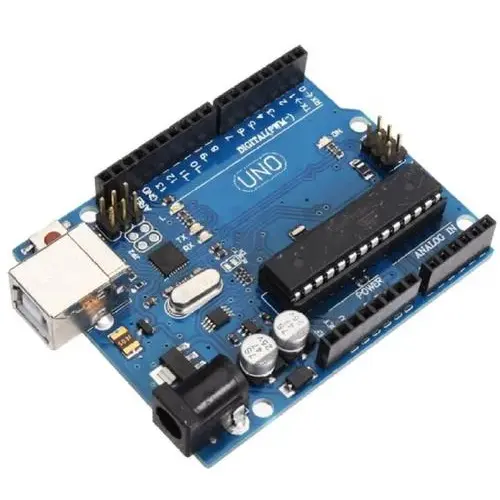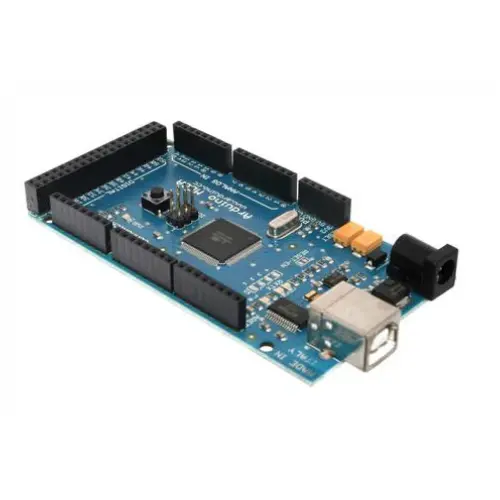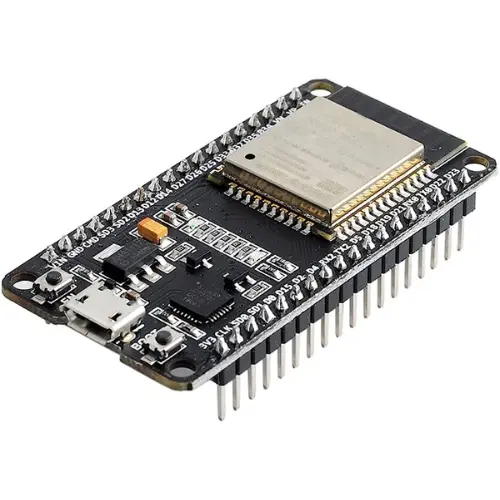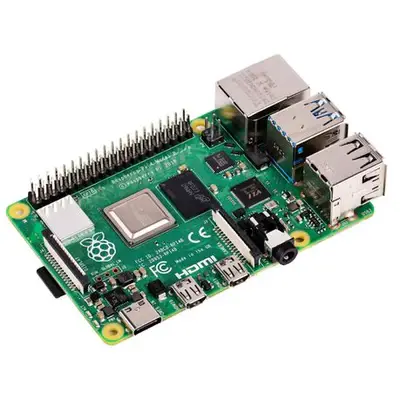In today's fast-paced technological landscape, microcontrollers have become the heartbeat of countless electronic devices, powering everything from smartphones and home appliances to industrial machinery and robotics. Choosing the right microcontroller for your project is crucial, as it determines the success and efficiency of your design. In this blog post, we will explore the key factors to consider when selecting a microcontroller, ensuring you make an informed decision that aligns with your project requirements.
Understanding Your Project Requirements
Before delving into the myriad options available, it's essential to clearly define your project requirements. Ask yourself the following questions:
- What is the nature of your project? Different projects require different microcontrollers (IoT, robotics, home automation, etc.)
- What is the required processing power? If your project requires fast-paced calculations you will run into problems when using a slow microcontroller.
- How much memory is needed for your application? Projects that do a lot of calculations or analyze incoming data strings require more memory.
- What is the power consumption limit? Some microcontrollers are very power-hungry. When working with batteries you should keep this in mind.
- Are there any specific communication protocols required? (Wi-Fi, Bluetooth, I2C, SPI, I2S, RS232, RS485, CAN-BUS, etc.)
Consider the Processing Power
Microcontrollers come in a wide range of processing power, from simple 8-bit to advanced 32-bit architectures. Choose an appropriate processing power based on the complexity of your tasks. For basic applications, an 8-bit microcontroller might suffice, while more complex applications such as image processing or data analysis might require the capabilities of a 32-bit microcontroller.
Check Memory Requirements
Memory requirements are crucial, especially if your project involves data storage or manipulation. Consider both Flash memory (for program storage) and RAM (for runtime data storage). Ensure the microcontroller you choose provides ample memory for your program and data without compromising performance.
Mind the Power Consumption
Power efficiency is critical, especially for battery-powered devices or applications where energy consumption is a concern. Low-power microcontrollers often come with multiple power modes, allowing you to balance performance and power consumption based on your application's needs. Evaluate the microcontroller's power consumption under different operating conditions to make an informed decision.
Check Communication Options
Most projects require communication with other devices or networks. Evaluate the microcontroller's built-in communication peripherals such as UART, SPI, I2C, Wi-Fi, and Bluetooth. Choose a microcontroller that supports the necessary communication protocols to ensure seamless interaction with other components of your system.
Development Ecosystem
The availability of a robust development ecosystem, including software tools, libraries, and community support, is invaluable. Opt for microcontrollers that have extensive documentation, a strong online community, and a variety of development tools. A well-supported microcontroller can save you time and effort during the development process.
Plan for Future Scalability
Think ahead and consider the scalability of your chosen microcontroller. Will your project evolve in the future? Choosing a microcontroller family that offers a range of devices with varying capabilities can be advantageous. It allows you to upgrade to a more powerful version of the microcontroller without drastically changing your existing codebase.
The different Microcontrollers to keep in mind

Arduino UNO (ATmega328)
The Arduino UNO or ATmega328P-PU is a great microcontroller to start with, It has a really large community behind it and most problems can be solved with a Google search.
The highlights of it are:
- It is very easy to use: The ATmega328P is known for its simplicity, making it an excellent choice for starting with.
- Because it is used in the Arduino boards, there is a very big community of enthusiasts who have shared their projects, and libraries online.
- The library-rich ecosystem significantly reduces development time and effort.
- For most small to medium-sized projects, the processing power and memory of the ATmega328P are more than sufficient.
It does, like any microcontroller have its drawbacks. This includes:
- The limited number of I/O pins, it has 14 digital pins and 6 analog pins.
- It does not have a lot of memory, while the memory on this is not much it is more than enough for most cases.
- It only has one core. Most projects only require a single core, some instances require a second core.
- Being an 8-bit microcontroller it lacks the ability to calculate high accuracy analog sensors.

Arduino Mega (ATmega2560)
The Arduino Mega is much like the Arduino UNO the main reason for using the Arduino Mega is the abundance of I/O pins, it consists of 54 digital pins and 16 analog pins.
Some other highlights include:
- It has multiple UART interfaces making projects involving UART much easier and reliable.
- With the 256kB of Flash memory, you can go wild with all sorts of memory-intensive projects.
- It also has 8kB of SRAM leaving you with enough space to store all of your variables.
- Also being fully compatible with the Arduino programming environment, it is also compatible with all of the libraries and communities available for ATmega328
It also has some downsides which include:
- It has a higher power consumption when compared with the ATmega328, meaning that if your project requires to be battery operated it is not recommended to use the ATmega2560
- They are not cost-effective for small projects.
- Because they have that many pins the ATmega2560 does not have a DIP package and specialized tools are needed to produce a PCB.

ESP32
Having Bluetooth, BLE, and Wi-Fi built-in as well as being cost-effective it is the most obvious choice for projects that require being wireless. It has a high clock rate of up to 108MHz.
Some of its main attractions are:
- It is a dual-core microcontroller, meaning that while you do all of your calculations your high-priority processes do not need to be put on hold.
- while having its own programming environment, it is compatible with the Arduino programming environment making switching over from Arduino to ESP32 very easy.
- Because it has Bluetooth and Wi-Fi built-in there is no need to add a separate module making it very cost effective.
- It has 4Mb of flash memory which means you can even run a web server straight from the ESP32
Here are some limitations to be aware of:
- When using Wi-Fi the power consumption of the ESP32 increases drastically.
- While it is compatible with the Arduino programming tools, some aspects of the ESP32 are different and more complex and require some getting used to.
- The breadboard-friendliness of the ESP32 is one drawback for development.
- The analog inputs of the ESP32 are not very stable, while it can still be used in some cases, for applications where the analog readings need to be precise it is recommended to use a separate ADC.

Rasberry Pi
The Raspberry Pi falls under a different category called Single Board Computers (SBC), however, because it has I/O pins which you can control with software it made the cut. The Raspberry Pi is mainly used when an advanced user interface or video processing is needed. Using a Raspberry Pi for development has its advantages and disadvantages, depending on the specific context and requirements of the development project.
Here are some plus points on Raspberry Pi:
- It supports several programming languages, making it a great learning platform.
- Because it mainly depends on Linux you can do much more with it than a regular microcontroller. Like an entertainment center or a web server.
- There are several communities behind the Raspberry Pi making learning fast and easy.
- Because of its small size, it is often used as a small webserver hidden away somewhere.
Now for the drawbacks:
- It is not cost-effective for small projects because it is a functional computer it does come with a price tag that is 4 times that of a regular microcontroller.
- The Raspberry Pi is comprised of a set of proprietary components making it less viable for production.
- While the the Raspberry Pi does have up to 8GB of RAM the operating system takes up much of this slowing down processes.
- Raspberry Pi's operating system and hardware layers introduce some latency, which might not be suitable for applications that require precise timing or real-time responses.
Conclusion
Choosing the right microcontroller is a pivotal decision in the development process. By understanding your project requirements, evaluating processing power, memory, power consumption, communication options, development ecosystem, and scalability, you can make an informed choice that ensures the success of your project. Remember, each project is unique, so take the time to research and compare options to find the microcontroller that perfectly aligns with your needs.
Choosing the right microcontroller for you.